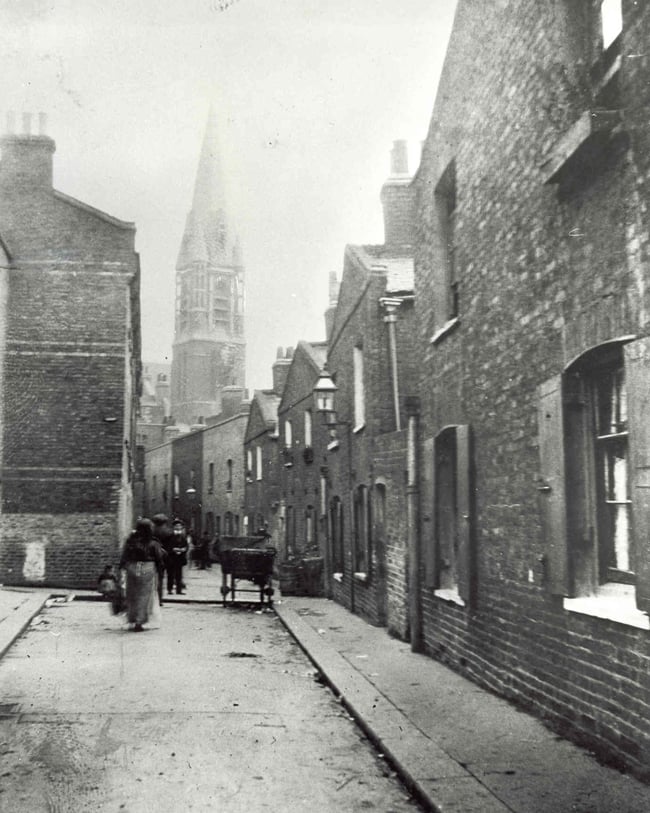Whitechapel in the 19th century was a place of extreme poverty, unsanitary living conditions, and a unique and diverse local culture.
Located in the East End of London, the area was home to a large population of working-class people, many of whom struggled to make ends meet.
THE CONDITIONS IN WHITECHAPEL
One of the defining features of Whitechapel in the 19th century was the squalid living conditions.
The population had increased rapidly due to the growth of industry, and many people lived in cramped and unsanitary conditions. Tenements were common, with entire families often sharing a single room. These rooms lacked proper ventilation, and diseases such as tuberculosis and cholera were prevalent.
Sanitation was also a major issue, with many streets lined with open sewers and garbage.

LOW WAGES A PROBLEM
The poverty in Whitechapel was extreme, with many residents struggling to afford basic necessities like food and clothing. The majority of residents were working-class, and many were employed in the nearby docks or factories.
However, wages were low, and unemployment was common.
This made it difficult for families to make ends meet, and many turned to crime or begging to survive.
A THRIVING IMMIGRANT COMMUNITY
Despite the challenges, Whitechapel in the 19th century was also home to a unique and diverse local culture.
The area was a hub for immigrants, with large numbers of Irish, Jewish, and Eastern European migrants arriving in the area. These groups often faced discrimination and prejudice, and tensions between different communities were common.
However, they also brought with them their own unique cultures and traditions.
One example was the vibrant Jewish community in Whitechapel, with synagogues, kosher food shops, and other Jewish businesses.
The area was also known for its pubs and music halls, which provided entertainment for the local community.
THE PENNY DREADFULS
However, the poverty and difficult living conditions in the area also gave rise to new cultural phenomena.
One example was the penny dreadful, a type of cheap, sensationalist fiction that was popular among the working classes. These stories often featured gruesome murders and other lurid topics, reflecting the darker side of life in the area.
THE JACK THE RIPPER MURDERS
The most infamous example of this darker side of Whitechapel was the Jack the Ripper murders of 1888. The killer, who was never caught, targeted prostitutes in the area, and the murders sent shockwaves through the community and beyond.
The Ripper murders are still a source of fascination today, and have become a part of the cultural mythology of Whitechapel.
